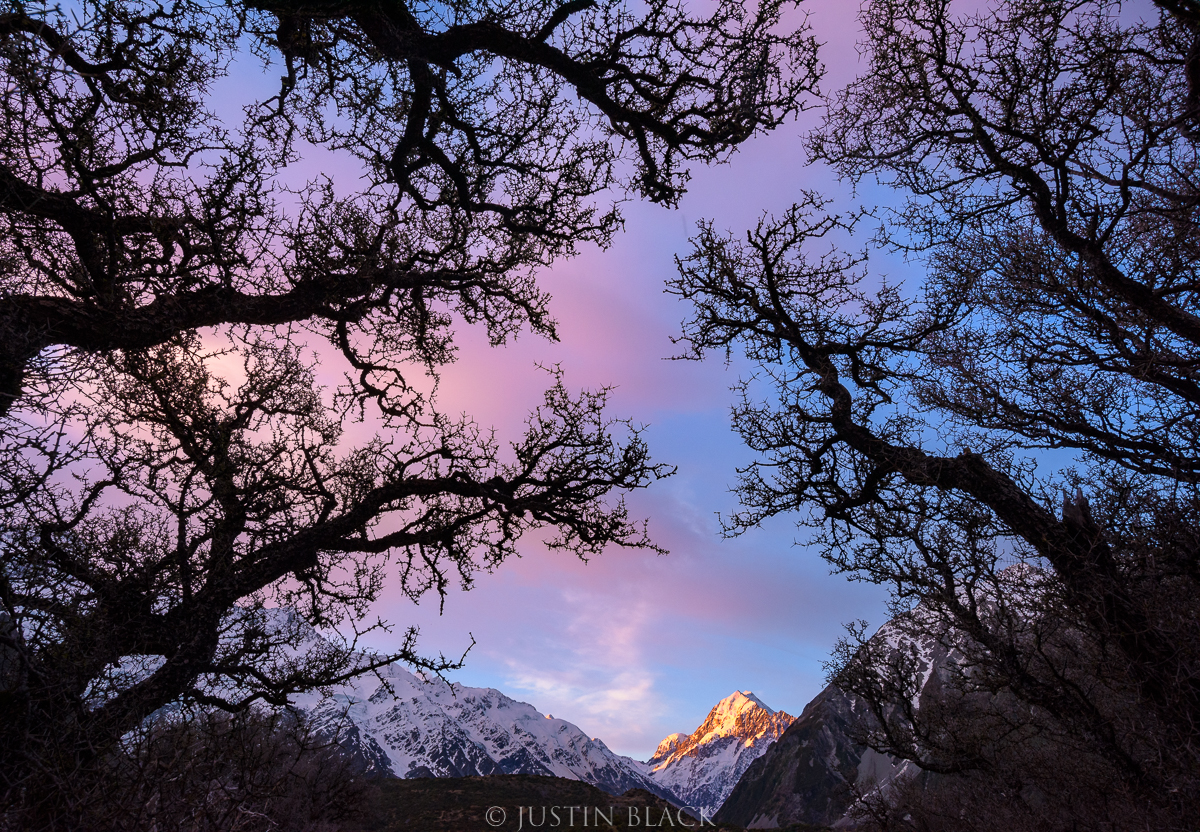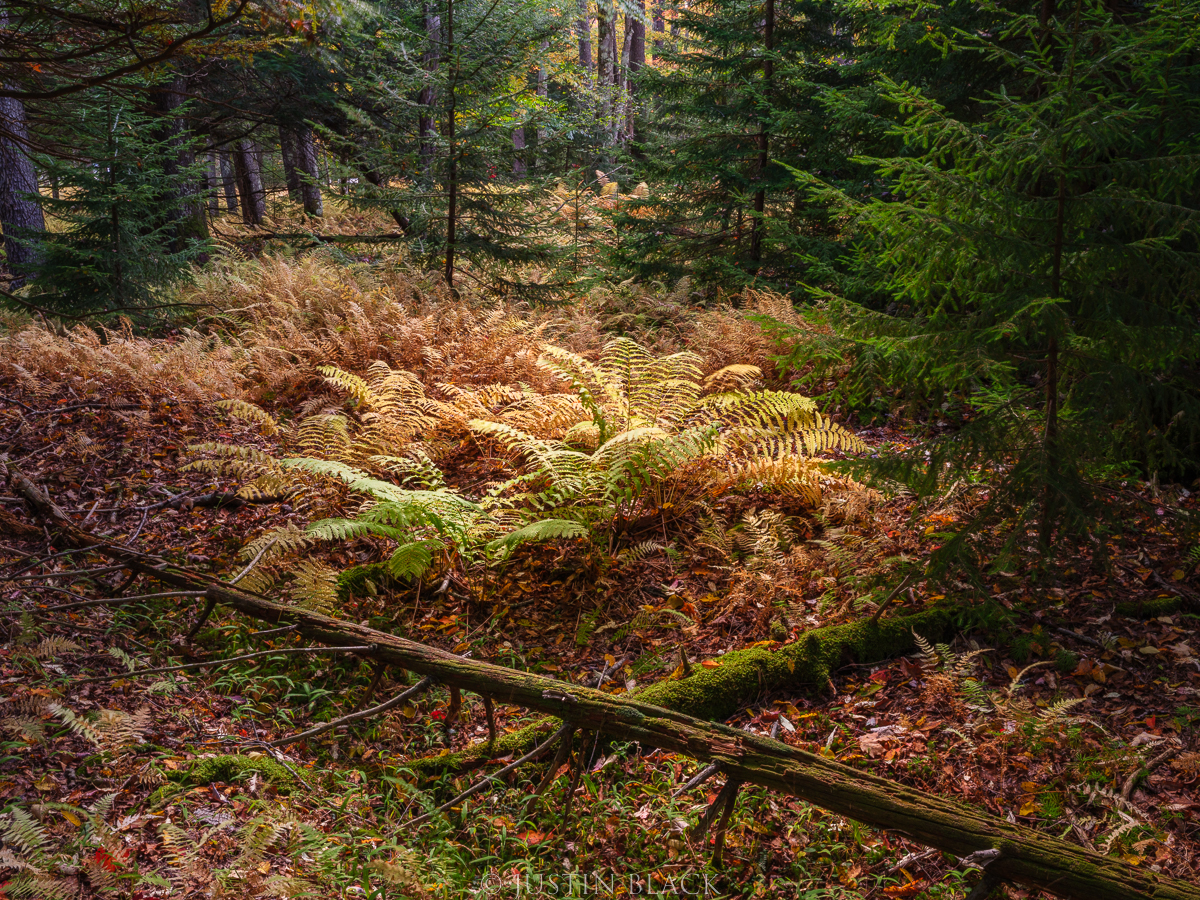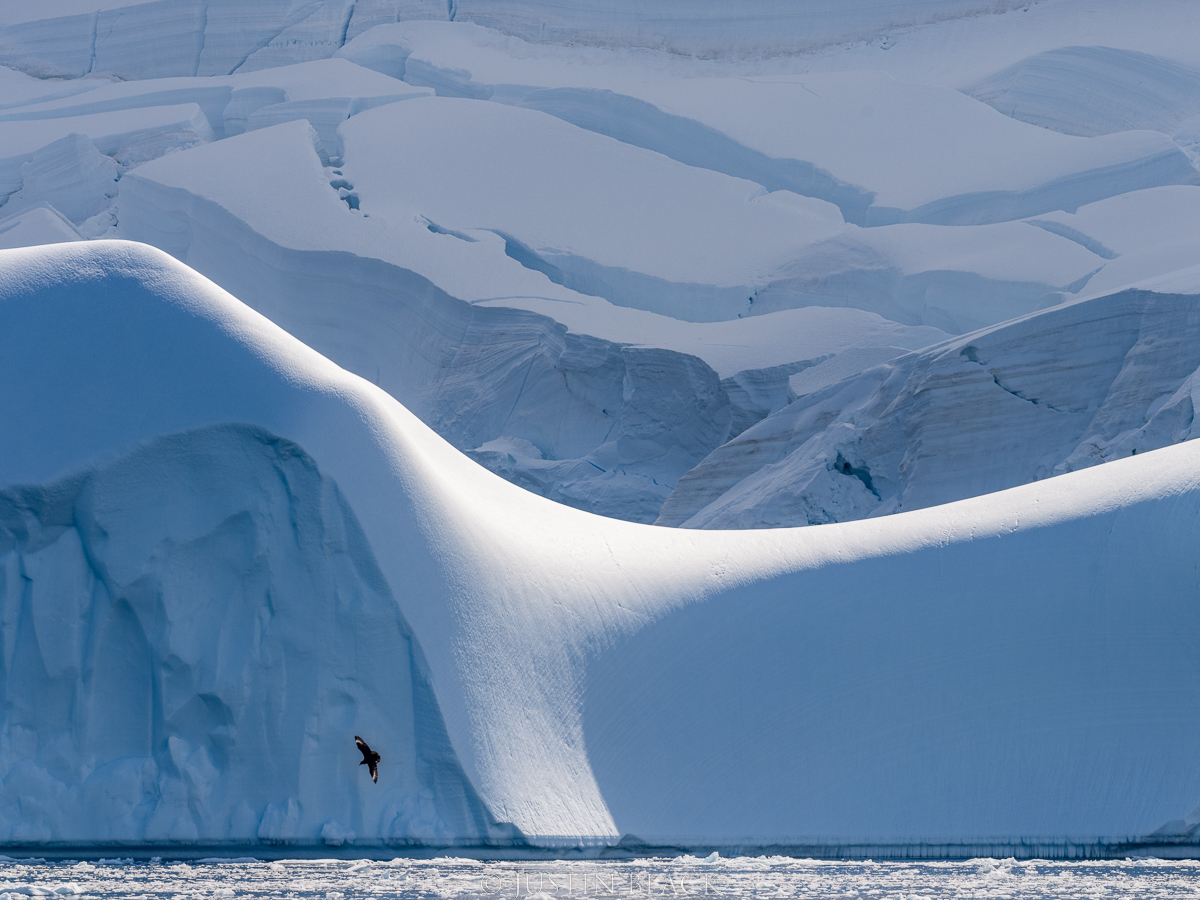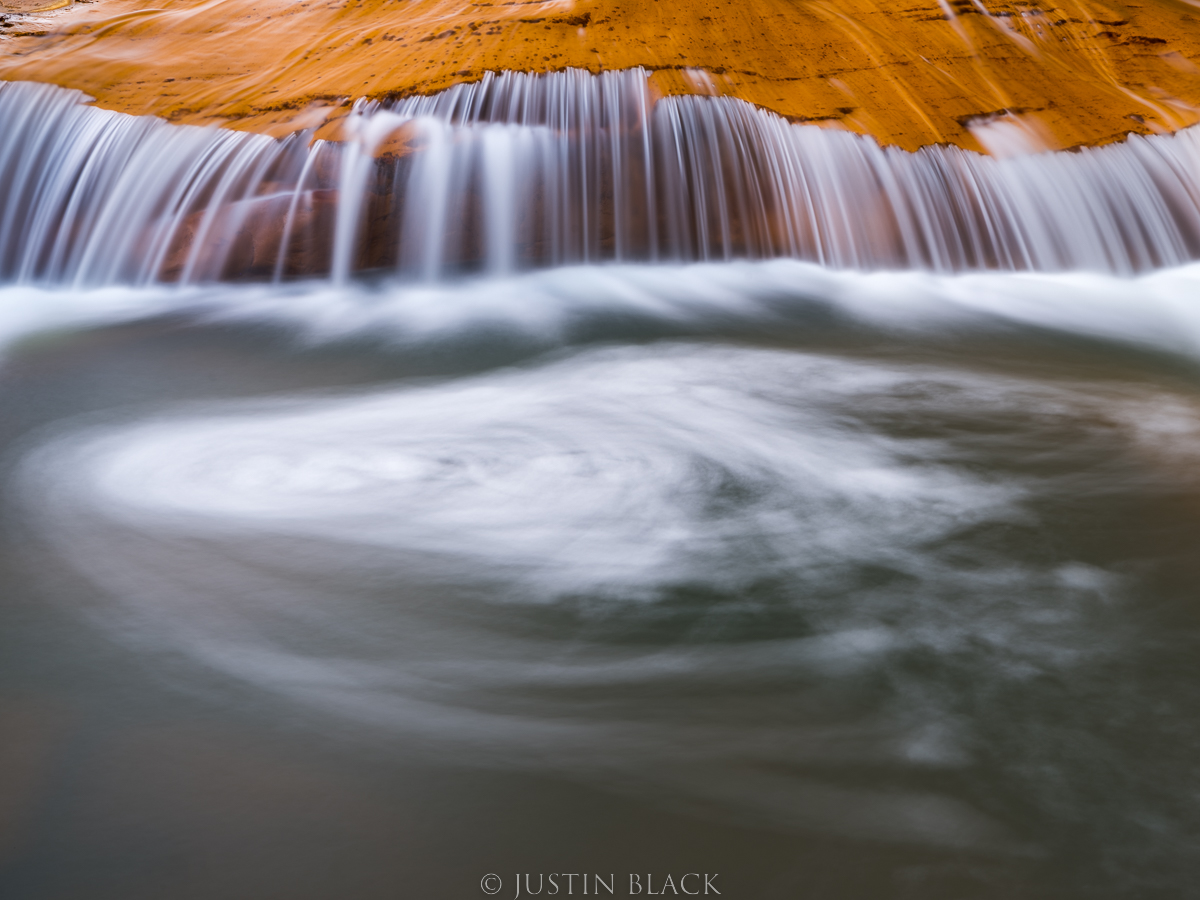for Outdoor Photographer, March 2021 landscape issue
Call it beginner’s luck, but naïve, bright-eyed novices often possess an enviably unconstrained creativity. Many years ago, I led a workshop group to a field of wild iris in full bloom, beneath the soaring granite backdrop of the Sierra Nevada’s east face. We arrived early, with ample time for everyone to scout out their own compositions before alpenglow lit up the peaks. The scene suggested a classic near-far composition, with clusters of iris in the foreground and the peaks toward the top of the frame. Folks went to work, and the sweet light came and went. Back at the classroom, when we projected the resulting images it turned out that the participants had made some very strong but rather predictable photographs, with more similarities than differences. They each had made a version of “the shot.” But then, up on the screen appeared an image that made us all gasp. One participant (whose name unfortunately escapes me) – a true novice photographer – had dispensed with the mountains and the alpenglow altogether. Instead, she lay down on the ground, pointed her lens skyward, placing silhouetted iris stems and delicate, translucent purple flowers against a background of robin’s-egg-blue sky. The image had minor issues of technique that one might expect of a beginner, but the fundamental design, color palette, and tonalities yielded a truly unexpected and elegant composition. It was simply a wonderful picture that she was able to find because she possessed both creative open-mindedness and the curiosity of a visual explorer. It was a unique photograph, all her own.
Contrast that with scenes we see photographed over and over, as keen photographers crowd together to knock off iconic landscape compositions. Astonishingly, in February 2019 about two thousand photographers crowded together at narrow vantage points in Yosemite Valley, seeking to shoot their own takes on Galen Rowell’s classic 1973 photograph, Last light on Horsetail Falls, some trampling sensitive vegetation, some leaving behind trash and human waste, and others arguing over tripod positions. I get it. It’s a great photograph of a truly sublime scene. I’ve personally inspected Galen’s original Kodachrome slide under a loupe and marveled at how well rendered it was in the original – no Photoshop trickery there. As is the case with many iconic landscape compositions, the formula for getting “the shot” can be readily found online, and other than potential human impacts to the landscape there’s nothing inherently wrong with folks continuing to photograph the annual spectacle. But I suspect that if I found myself in Yosemite in February, I’d just leave my camera in the car and watch the lightshow, because for me, that picture was Galen’s, and I want to apply my efforts to making photographs that result from my own experiences and discoveries – my personal visual interpretation of the world.

Tech Specs: Nikon D810, Nikkor 18-35mm f/3.4-4.5, focal length of 18mm, 1/50sec, f/16, ISO 800, mounted on a Really Right Stuff TVC-24L tripod with BH-55 head.
To make mountains look massive, towering over the landscape, a standard approach is to photograph them from miles away with a lens in the normal to telephoto range. Instead, here I was, right up against the base of New Zealand’s Southern Alps, with everything on my side of the ridge in shadow. Potential foreground subjects were limited – mostly grasses, bushes, and stunted trees, all in rather murky light – and only Mount Cook’s 12,218-foot summit pyramid and the clouds above caught the rays of the setting sun. It occurred to me that rather than resorting to the easy solution of making a tight mountain portrait with a telephoto, I could create more graphic interest, and a uniquely original composition, by mounting a super-wide lens and searching out a cohesive design among the trees, silhouetting them against the colorful sky. Mount Cook, “pushed away” and reduced in scale by the wide focal length, would then simply provide a sense of place and act as the primary focal point of a picture that is more about my personal experience of being in the valley that evening, than it is about the high peak itself.
The fact is that our most popular landscape photography destinations offer countless opportunities to make use of their special characteristics and qualities – their “photographic raw material” so to speak – to create compelling new compositions all our own. Great photographers are still drawn to a heavily photographed place like Yosemite Valley because of its exceptional qualities of light and topography, not for specific famous vista points and compositions rehashed again and again. Big landscapes like this provide the opportunity to play with scale, using the soaring granite walls to dwarf things that normally tower over us, like a mighty oak tree or a ponderosa pine. The canyon walls also offer the photographer clean backdrops that can be used to eliminate the sky and simplify composition. If we approach a landscape in terms of the particular inventory of visual elements and characteristics it offers, then we quickly realize that one doesn’t have to be in Yosemite, Zion, or Yellowstone to apply the lessons they provide for us.
So, in a world overflowing with photographs, how do we keep our work fresh and meaningful in relation to what has gone before? To create unique images according to a way of seeing that is yours, you have to be open to coming up with ways of approaching subjects, scenes, and/or themes that are in some way new, different, or surprising. Fortunately, the difference in your personal approach doesn’t need to be drastic or revolutionary. Indeed, it can be rather subtle, but it should come from within you. It can even be as simple as letting go of familiar iconic scenes and giving yourself permission to look with your own eyes.’

Tech Specs: Fujifilm GFX100, GF Fujinon 45-100mm f/4.0, focal length of 45mm (36mm “full-frame” equivalent), 1/2sec, f/22, ISO 800, with a Singh-Ray LB Circular Polarizer, mounted on a Really Right Stuff TVC-24L tripod with Arca-Swiss D4 geared head.
In the rush to photograph the next iconic landscape composition, it’s easy to overlook the potential of more down-to-earth scenarios. When I was growing up in Washington, DC, many of my photographic idols seemed to focus on the big landscapes of the American west or exotic destinations abroad, and in comparison my eastern surroundings seemed uninspiring. I yearned for alpenglow on snow-capped peaks, red-streaked slickrock, towering redwoods, desert sand dunes, and waves crashing against rocky coastlines, not the east’s chaotic second-growth woodlands, flat coastal plains, and mountains that would be mere molehills out west. It would take photographing the western landscape almost exclusively for ten years for me to realize that even in the context of our grandest landscapes, like the Sierra Nevada or the Grand Canyon, I often gravitate toward exactly the sort of intimate compositions that can be found virtually anywhere in nature. The trick is that one actually has to learn to see in order to find and make the most of these scenarios.
In this case, I had stopped my car to have a look at a roadside cluster of ferns in yellow-orange autumn color, but the forest beyond beckoned. I walked among the trees quietly and unhurried, stopping periodically to look, listen, inhale the mountain air, and take in my surroundings. Eventually, I happened upon a fallen tree trunk that provided a diagonal pathway to a cluster of ferns framed among hemlocks. I set up the tripod and waited a few minutes until the patchy clouds overhead delivered a shaft of diffused sunlight to momentarily spotlight the ferns.
Creativity can be learned and practiced and, most importantly, it is absolutely possible to learn how to create the circumstances in which one is able to be most creative. You don’t have to be born with it, although upbringing, life experience, and your attitude do have an influence on how open a mind is to being curious about new possibilities and to solving problems in new ways. The English comedian John Cleese – of Monty Python and Fawlty Towers fame – has said that his best solution for breaking out of writer’s block is pure joyful play. He gives himself permission to be silly, let go of propriety, and just have fun. After a while, the ideas flow. I agree with Cleese wholeheartedly, but I also think that relaxing our frame of mind with calming music, a warm bath, or sitting quietly to listening to the river flowing by – letting go of the pressure to perform and produce at least for a little while – will tend to lead to new ideas and perspectives. You have to have faith that the inspiration will come. When you’re feeling pressure to come up with new ideas, the whole system can shut down.

Tech Specs: Handheld using Fujifilm GFX100, GF Fujinon 250mm f/5.6 with TC-1.4x, focal length of 350mm (277mm “full-frame” equivalent) with image stabilization on, 1/1000sec, f/16, ISO 800.
One of the grandest scenes on most Antarctic cruises is the Lemaire Channel, with the soaring glaciated peaks of Booth Island and the Antarctic Peninsula rising steeply on either side. Most of the cruise ships do a passage or two through the channel, but as masters of the private vessels we use on our Visionary Wild Antarctica adventures, we are able to spend quality time there photographing. The luxury of time and control over mobility leads to deeper seeing and greater creativity, as we get the big scenic vistas out of our system and start seeing and working with the simpler, more concise graphic opportunities available in the landscape. In this case, we found a large iceberg floating in the channel at the south end of Booth Island, with the sun lighting it from above and behind. Meanwhile, large areas of the glacier on the island were in the shade of the mountains, enabling me to isolate the sunlit curve of the iceberg against the darker glacial backdrop. The decisive moment came when a Skua flew across my composition, lending the photograph a perfect visual accent.
Also, it is impossible to overstate the value of finding a supportive but honest and constructively critical peer group willing to provide feedback on your work, help refine your creative direction, and promote new ideas. Early in my career, I gathered monthly with a group of photographers in the DC area to review and comment on one another’s work prints and projects in development. Since then, fellow photographers, picture editors, gallerists, print collectors, and artist friends have been important sounding boards. Cleese’s experience comes to mind once again, as he came up in just such a peer group with the Cambridge Footlights drama club before forming Monty Python, which was similarly collegial and supportive but also committed to brutally honest criticism. Through our Visionary Wild workshops community, we deliberately encourage ongoing communication among the various instructors and participants to promote just this sort of sharing and feedback over time. It’s important.

Tech Specs: Fujifilm GFX100, GF Fujinon 45-100mm f/4.0, focal length of 83mm (66mm “full-frame” equivalent), 30 sec, f/22, ISO 100, with a Singh-Ray Mor-Slo ten-stop ND Filter, mounted on a Really Right Stuff TVC-24L tripod with Arca-Swiss D4 geared head.
The ruggedly beautiful Potomac Highlands of West Virginia have long been one of my favorite areas to photograph in the eastern United States. The mountain and hollow topography creates ecological “altitude islands” supporting species of plants and animals otherwise found in Canada, and its relative remoteness tends to keep visitation manageable. The Blackwater River offers several beautiful waterfalls, and while most tourists satisfy themselves at the restrictive viewing platform overlooking Blackwater Falls in the eponymous state park, I prefer to seek out lesser-known cascades that offer more freedom of movement and creative options. This stretch of the river flows over a slab of Pottsville Formation sandstone, stained orange by run-off from 175 coal-coke ovens that operated a mile upstream in the first half of the 20thCentury. The stacked bands in the top third of the composition – rock slab, edge-to-edge spreading lines of the fall, and the fanning froth at the bottom of the fall – accompanied by the spinning eddy entirely isolated against darker water in the bottom two-thirds of the composition make the picture, and while there are all sorts of photographs to be made here that include the riverbanks and adjacent forest, for me this simpler set of components rendered the sense of calm and serenity that I felt there.
For me, another important part of cultivating creativity has been to maintain what I call visual literacy. That is, building a familiarity and fluidity with the various components and aspects of composition, communication, and expression through two-dimensional art. I’ve practiced this over the years by looking at a lot of art, identifying what I do and don’t like about a piece, what’s working and what isn’t, and tucking away my observations and lessons learned for future reference when I am photographing. Often, I’m not consciously aware when I refer to this internal visual database in the making of a picture, but I can often identify the influence at play later on.
We have all been influenced by photographers and artists (and even non-visual artists, such as writers and musicians) whose work we admire. It’s important to acknowledge your influences and learn from them, but it’s even more important to move beyond them to deliberately pursue your own curiosity and interests, allowing yourself to be guided by your own passions, emotions, experience, and insights. At the end of the day, your photographic expression should be yours alone.

Tech Specs: Fujifilm GFX100, GF Fujinon 23mm f/4.0 (18mm “full-frame” equivalent), 1 sec, f/11, ISO 400, with a Singh-Ray LB Circular Polarizing Filter, mounted on a Really Right Stuff TVC-24L tripod with Arca-Swiss D4 geared head.
One of the features that makes Great Smoky Mountains National Park a photographer’s playground is that most of the roads follow natural watercourses, providing wonderful access to many miles of wild creeks and rivers. This access facilitates the search for new compositions that reflect the photographer’s personal way of seeing. Last autumn, I drove up a quiet dirt road to a backcountry trailhead and then strolled down the road with my gear, looking down upon the adjacent creek about forty feet below in search of potential compositions. From my vantage point above, I saw this beech tree’s branches fanning out over boulders along the edge of the creek, and imagined what it would look like from beneath the leaves. I visualized a composition with the leaves taking on a translucent glow from the skylight above, separating by tone and hue against the darker forest behind and providing a warm contrast to the boulders and flowing water in the creek, which were illuminated by blue sky. I often use this technique of “projecting” an imaginary camera into a vantage point and perspective that is within sight, but that I haven’t physically occupied yet – sort of like imagining what a drone would see if I were to fly one that position. It’s a mental exercise that enables me to work out from a distance whether a composition is worthwhile, saving a lot of time and trouble. In this case the situation looked good, so I made the scramble down over roots and rocks, to find exactly the composition I had in mind.

Tech Specs: Three-frame vertical shift-stitch using a 24mm f/3.5 PC-E Nikkor (field of view approximately equal to 16mm), Nikon D810, ½ sec, f/22, ISO 64, with a Singh-Ray LB Circular Polarizing Filter mounted on a Really Right Stuff TVC-24L tripod with BH-55 head.
If you put in the time to explore locations with good potential, you’ll stumble upon intimate compositions that seem to frame themselves. Lake Powell offers lots of big, wide-open landscape opportunities, but personally I find the nooks and crannies more interesting. There are endless side canyons concealing beautiful forms carved by wind and water. In this case, I just came around a bend and saw this tumbleweed nestled, just so, in this pocket of a watercourse eroded into the slickrock. At that point, it was just a matter of composing, using the shape of the pocket as my foreground element, allowing the natural lines to lead in from the bottom corners, and following the V-shaped layers as they receded toward the canyon walls in the distance, providing a sense of place.